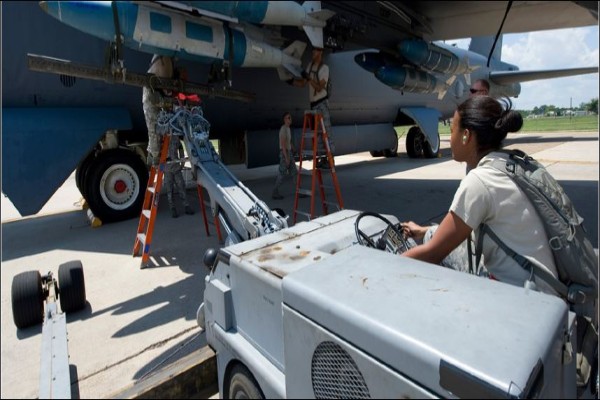The nine nuclear-armed states spent a combined total of $91,393,404,739 on their arsenals in 2023, says a report released Monday by The International Campaign to Abolish Nuclear Weapons (ICAN).
the ICAN report, titled ‘Surge: 2023 Global Nuclear Weapons Spending’, says $10.7 billion more was spent on nuclear weapons in 2023 than in 2022.
‘In 2023 China, France, India, Israel, North Korea, Pakistan, Russia, the UK and US spent a combined $91.4 billion on their nuclear arms, which breaks down to $173,884 per minute, or $2,898 a second,’ it says.
‘The United States’ share of total spending, $51.5 billion, is more than all the other nuclear-armed countries put together and accounts for 80% of the increase in nuclear weapons spending in 2023,’ says the report.
‘The next biggest spender was China which expended $11.8 billion with Russia spending the third largest amount at $8.3 billion. The United Kingdom’s spending was up significantly for the second year in a row with a 17% increase to $8.1 billion.’
The report comes at a time when Russia has been repeatedly warning that it would not hesitate to use its nuclear arsenal if pushed into a corner over its offensive on Ukraine. In fact, on the same day that the report was released, the Kremlin said a remark by NATO chief Jens Stoltenberg that the military alliance was holding talks on deploying more nuclear weapons was an “escalation of tension”.
🚨NEW REPORT ALERT🚨
Can you believe global spending on nuclear weapons surged to $91.4 billion in 2023? That’s $2,898 a second on weapons that should never be used. Learn more in ICAN’s report “Surge: 2023 Global Nuclear Weapons Spending”🔗➡️https://t.co/svIeAKarmF#NuclearBan pic.twitter.com/2MCMJSJapo
— ICAN (@nuclearban) June 17, 2024
Spike in Spends:
- The United Kingdom, France, India, Israel, Pakistan, and North Korea also had significant spending on N-weapons.
- The United States dedicated 14% of its military spending to N-weapons, while China allocated 4% and Russia allocated 8%.
- France spent $6.1 billion, or 10% of its total military budget, on N-weapons.
- India spent $2.7 billion, or roughly 3% of its military spending, N-weapons.
- Israel spent $1.1 billion, or 5% of its military spending, on N-weapons.
- Pakistan spent $1 billion, or 10% of its military spending, on N-weapons.
- North Korea spent $856 million, or 6% of its military spending, on N-weapons.
“Surge” is the 5th edition of ICAN’s global nuclear weapons spending report. Over the last 5 years, $387 billion has been spent on nuclear arms, with the yearly spending increasing by 34% from $68.2 billion to $91.4 billion per year, as all nine nuclear-armed states continue to modernise, and in some cases expand, their arsenals, it says.
“The acceleration of spending on these inhumane and destructive weapons over the past five years is not improving global security but posing a global threat,” noted Alicia Sanders-Zakre, co-author of the report.
Who profits from this surge?
Globally, nuclear-armed countries have ongoing contracts with companies to produce nuclear weapons worth a total of at least $387 billion, continuing in some cases through 2040. In 2023, companies involved in the production of N-weapons received new contracts worth just under $7.9 billion. In the US and France alone (the countries for which figures can be obtained) these firms spent $118 million on lobbying.
‘These large profits incentivise nuclear weapons manufacturers to spend millions — at least $6.3 million in 2023 – to influence government policy and public attitudes towards nuclear weapons through supporting think tanks,’ says the report.
In 2023, at least $123 million was spent hiring over 540 lobbyists and providing financing for major think tanks that influence the nuclear debate.
Asserting that ‘the billions of dollars squandered on nuclear weapons every year is an unacceptable misallocation of public funds’, the report also examines the opportunity cost of nuclear weapons.
‘Instead of pouring much-needed resources into a reckless race with weapons of mass destruction, the 9 nuclear-armed states could pay for vital services for their citizens or help address existential global crises,’ it says.
‘$91.4 billion a year could pay for wind power for more than twelve million homes to help combat climate change, or cover 27% of the funding gap to fight climate change, protect biodiversity and cut pollution. One minute of 2023 nuclear weapons spending could have instead paid for planting one million trees. Five years of nuclear weapons spending could have fed 45 million people who are currently facing famine- for most of their lives.’
To draw attention to this extremely dangerous trend, ICAN is calling for a global week of action from September 16 to 22, 2024, coinciding with the 79th session of the UN General Assembly. to ‘push together with one clear message: “No Money for Nuclear Weapons!” ‘
In a career spanning three decades and counting, Ramananda (Ram to his friends) has been the foreign editor of The Telegraph, Outlook Magazine and the New Indian Express. He helped set up rediff.com’s editorial operations in San Jose and New York, helmed sify.com, and was the founder editor of India.com.
His work has featured in national and international publications like the Al Jazeera Centre for Studies, Global Times and Ashahi Shimbun. But his one constant over all these years, he says, has been the attempt to understand rising India’s place in the world.
He can rustle up a mean salad, his oil-less pepper chicken is to die for, and all it takes is some beer and rhythm and blues to rock his soul.
Talk to him about foreign and strategic affairs, media, South Asia, China, and of course India.





